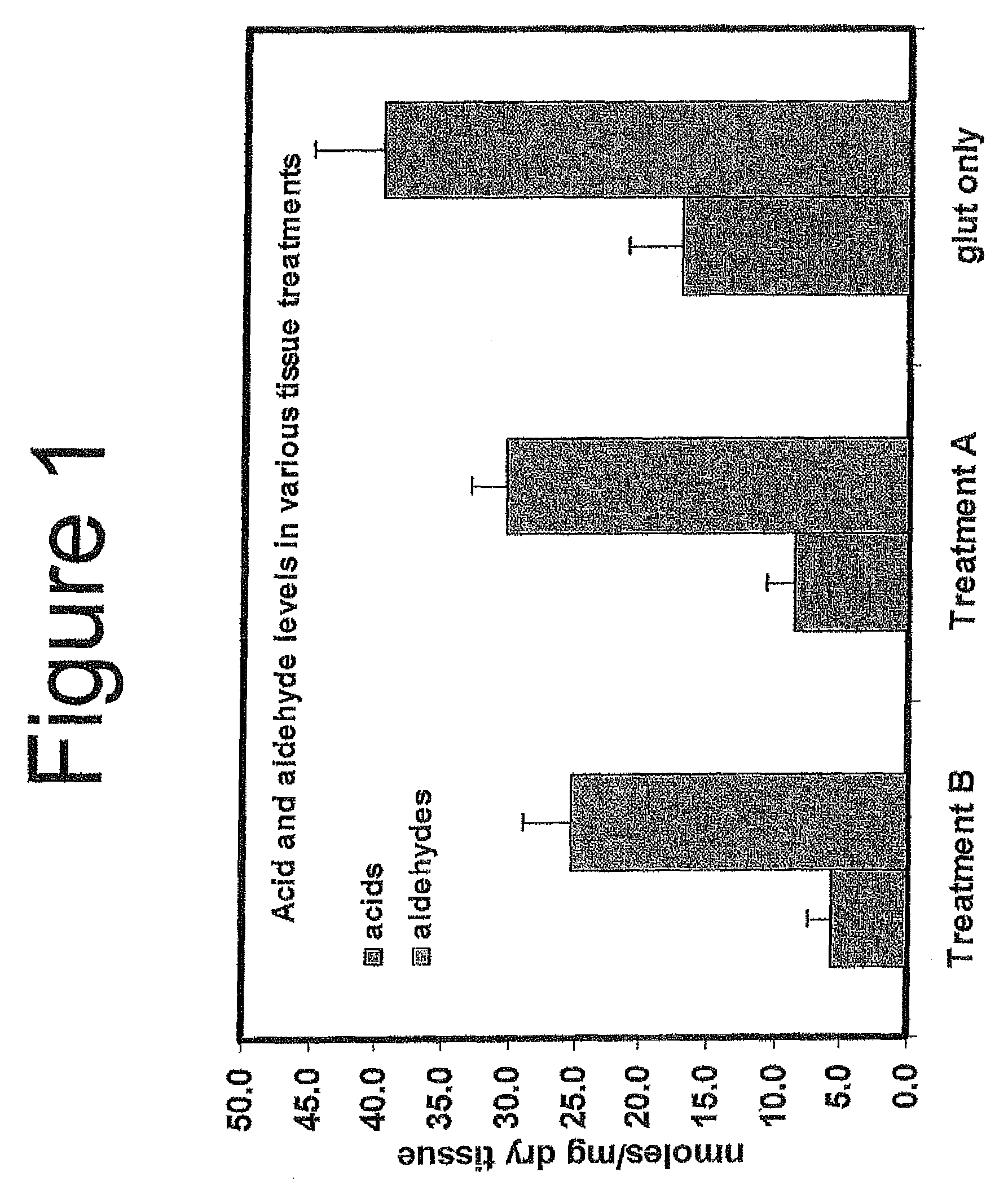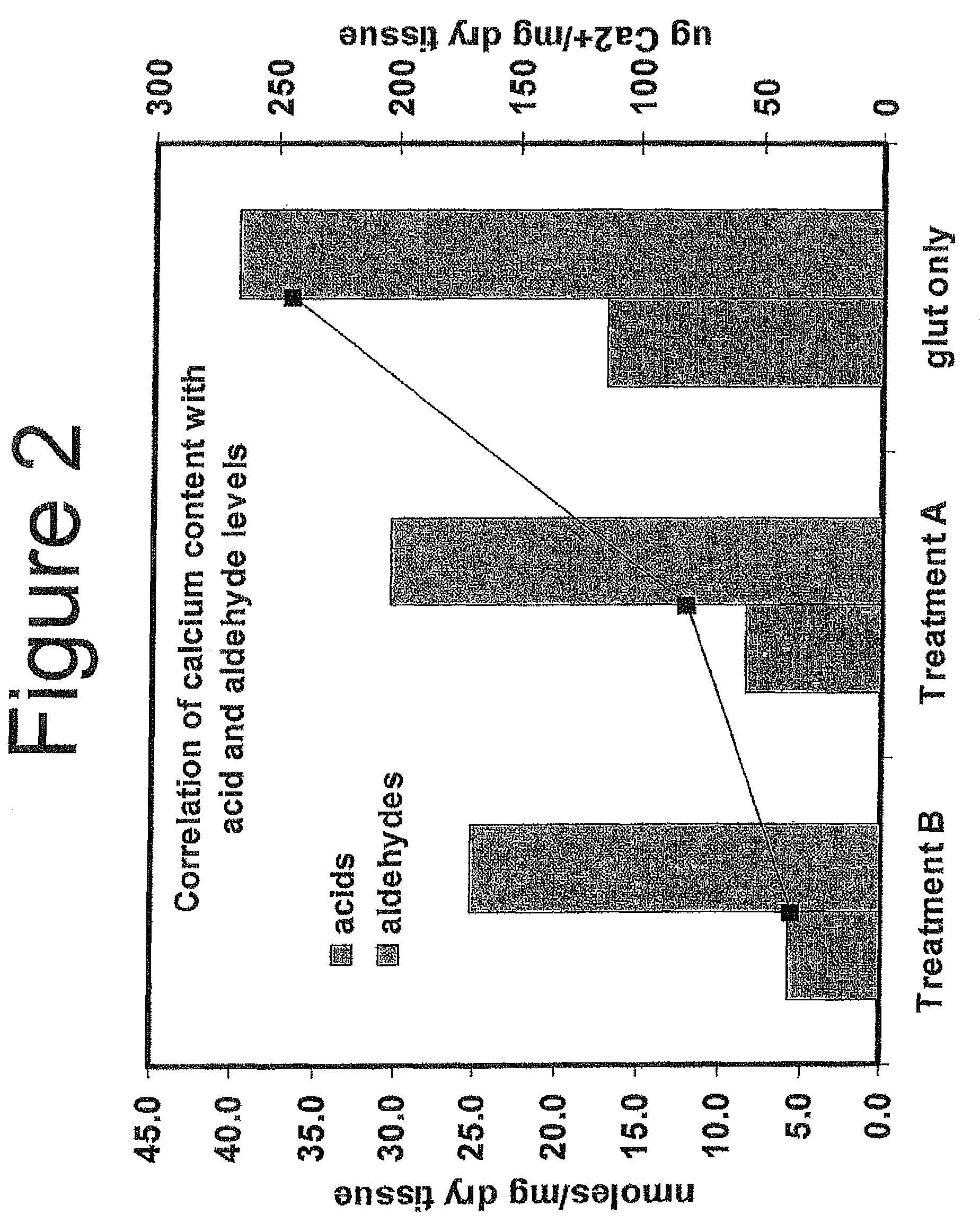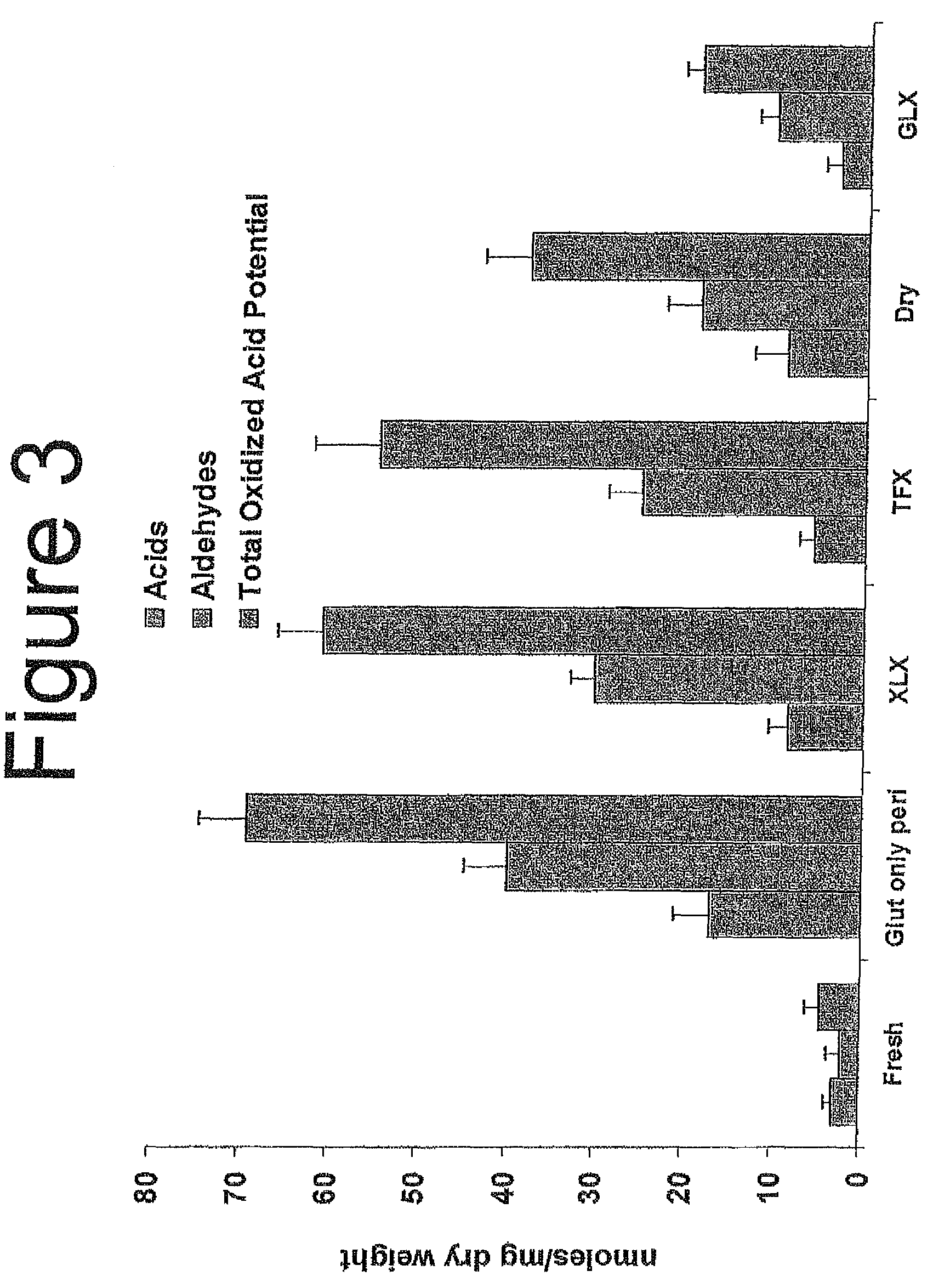Capping bioprosthetic tissue to reduce calcification
a bioprosthetic tissue and cap technology, applied in the field of bioprosthetic tissue, can solve the problems of valve failure, undesirable stiffening or degradation of bioprosthetic tissue, and calcification of the proteins of the connective tissue within it,
- Summary
- Abstract
- Description
- Claims
- Application Information
AI Technical Summary
Problems solved by technology
Method used
Image
Examples
example 1
[0148]Aldehyde capping using ethanolamine and sodium borohydride of glutaraldehyde-fixed tissue. Bioprosthetic tissue was removed from 0.625% glutaraldehyde just after heat treatment step and rinsed in ethanol:saline (20% / 80%) for 2 minutes. One liter of capping solution was prepared containing 10 mM ethanolamine (0.06%), and 110 mM sodium borohydride (0.42%) in 50 mM phosphate buffer (pH 7.3-7.8)
[0149]The capping solution was placed on an orbital shaker, then tissues (leaflets or valves) were placed in the solution so that they were completely submerged. The ratio of tissue to solution was 3 leaflets per 100 ml or one valve per 100 ml. The container was partly covered but not completely sealed because hydrogen gas liberated by the chemical reaction with water could cause the container to explode. The orbital shaker was operated at between 80-100 rpm for 4 hours at room temperature. The tissue was removed and rinsed in FET solution (formaldehyde, ethanol, tween-80) for three minutes...
example 2
[0150]Glycerol dehydration process for pericardial valve bioprosthesis. Pericardial valves were dehydrated by holding each valve with forceps on the sewing ring of the valve and placing the valve in a glycerol / ethanol (75% / 25%) mixture. Beakers containing the valves were placed on an orbital shaker operating between 50-60 RPM for at least one (1) hour but not more than four (4) hours then immediately treated to remove excess glycerol. This was done by holding them with forceps on the sewing ring of the valve, taking the valve out of the glycerol / ethanol mixture and then placing it on an absorbent towel in a wide mouth jar. After being allowed to dry for at least 5 minutes at room temperature the jar was attached to a lyophilizer and dried for 2 hours. Valves were then transferred to ethylene oxide gas permeable packages and sterilized with ethylene oxide.
example 3
[0151]Calcification Mitigation—Small Animal Model. In order to evaluate the calcification mitigation properties of GLX treated and EO sterilized pericardial tissue, two small animal feasibility studies were conducted. These studies demonstrate that, 1) GLX is superior to TFX in mitigating the occurrence of calcification in tissue, and 2) real time aged GLX tissue is also superior to TFX in mitigating calcification. In both studies, GLX valves demonstrated reduced variability in calcification data when compared to TFX valves. Test methods and results of each are summarized below.
PUM
 Login to View More
Login to View More Abstract
Description
Claims
Application Information
 Login to View More
Login to View More - R&D
- Intellectual Property
- Life Sciences
- Materials
- Tech Scout
- Unparalleled Data Quality
- Higher Quality Content
- 60% Fewer Hallucinations
Browse by: Latest US Patents, China's latest patents, Technical Efficacy Thesaurus, Application Domain, Technology Topic, Popular Technical Reports.
© 2025 PatSnap. All rights reserved.Legal|Privacy policy|Modern Slavery Act Transparency Statement|Sitemap|About US| Contact US: help@patsnap.com



